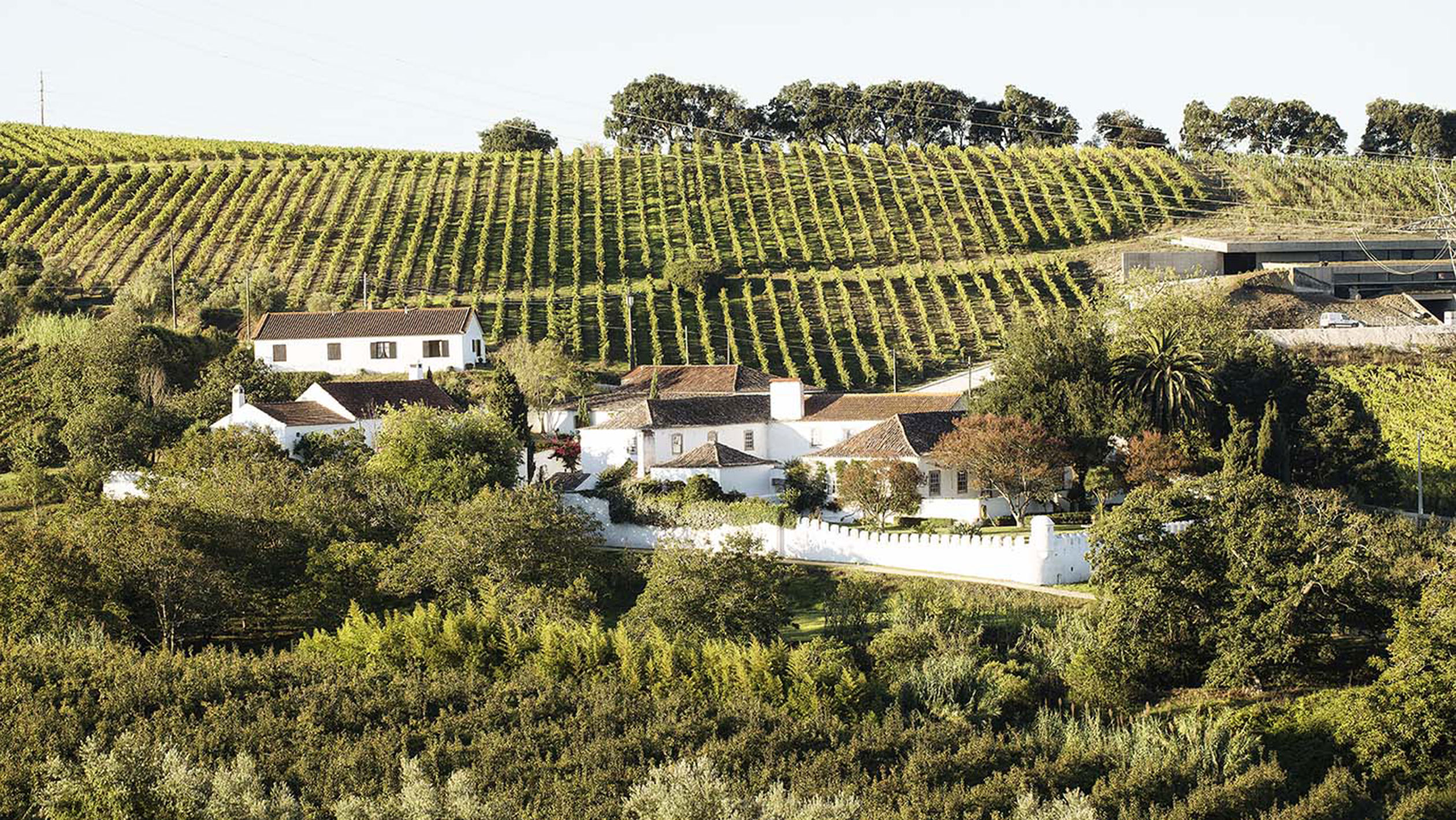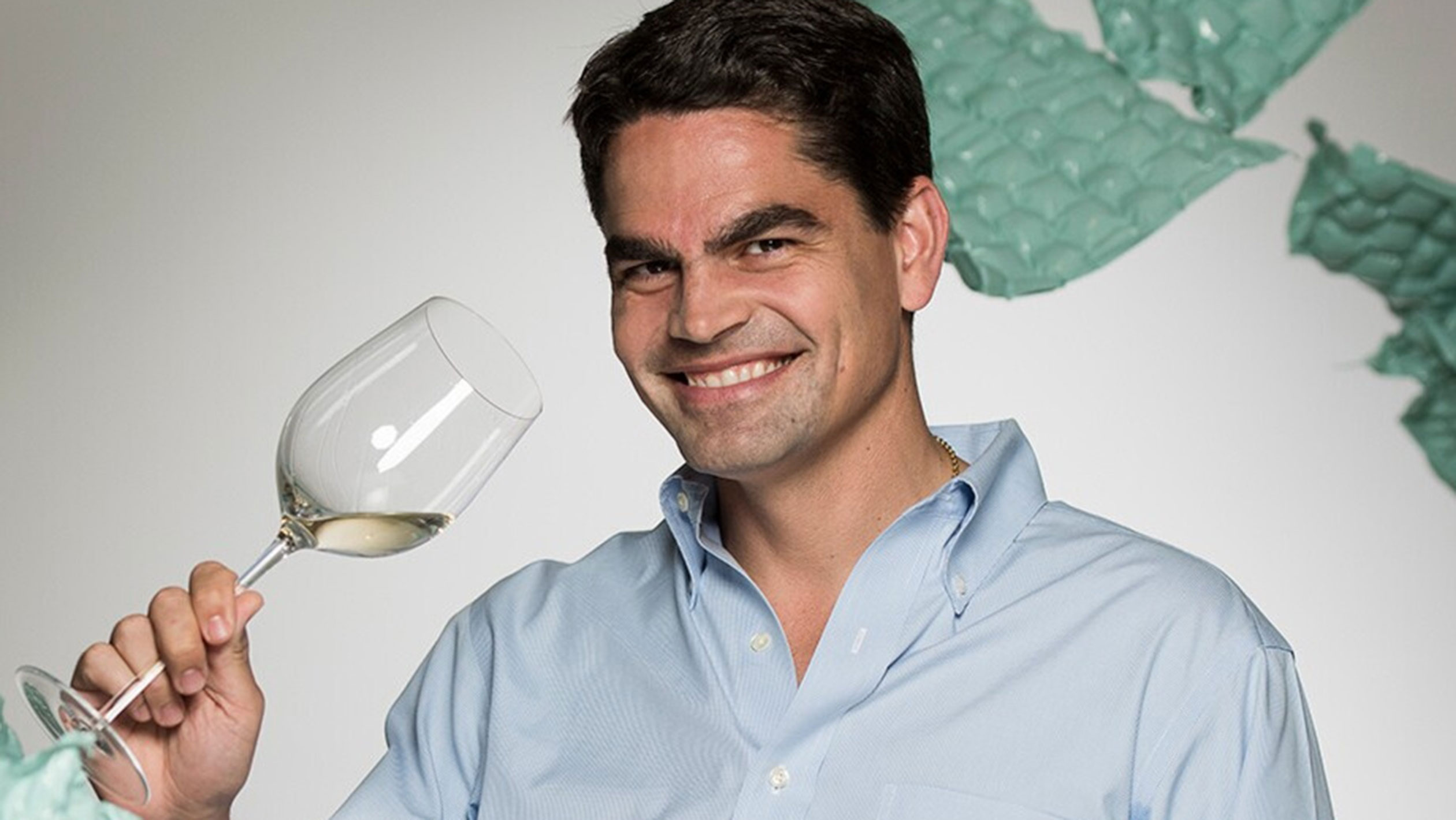How Portugal Is Shaking Its Inexpensive Wine Reputation | SevenFifty Daily
Portuguese wine is some of the cheapest on the planet. In the United States, which is Portugal’s second-biggest export market, valued at over $100 million, value for money remains the country’s calling card, with some styles selling for as low as $6 stateside.
Portugal’s “bang for the buck” reputation has allowed for many big brands to flourish in the U.S. market. But others feel that bargain basement prices hurt the nation’s wine reputation more than they help it, making it more challenging for premium Portuguese wines to be taken seriously.
“When defining and marketing a country, it’s very dangerous to go in cheap,” says Andrea Tavares, whose family-run winery and vineyard, Quinta de Chocapalha, located in the Lisboa DO, focuses on mid-to-premium tiered wines.

Don’t miss the latest drinks industry news and insights. Sign up for our award-winning newsletters and get insider intel, resources, and trends delivered to your inbox every week.
Portuguese wine today faces a number of challenges shared by many other regions, including labor shortages, oversupply, an increasingly erratic climate, and rising consolidation. But Portugal is also one of the most affordable places to visit in Western Europe. In 2023, Portugal recorded a record high number of visitors to the country, and Americans are to thank for a large chunk of this growth. The number of U.S. visitors to the country has risen exponentially in recent years, hitting the one million mark just in the first half of 2024, double what it was in the entirety of 2022. The increase in Americans experiencing Portuguese culture, cuisine, and vineyards firsthand is a big positive for the nation’s wine industry.
“That experience in-country is an absolute game changer,” says wine writer John Sumners, an American expat living in Portugal and author of the book There’s More Than Port in Portugal. “The light bulb finally goes on and [American tourists] become Portuguese wine fanatics for life.”
Quality-minded Portuguese producers hope to use the tourism boom to their advantage by convincing Americans that Portugal’s wine is more than just “cheap and cheerful.” It’s a sound goal, but challenges abound.
Portugal is still considered the new kid on the block when compared to its French, Italian, and Spanish neighbors. Despite boasting 4,000 years of winemaking history, Portugal’s modern wine industry didn’t really get going until the 1980s, after its authoritarian government—which prioritized industrialization over artisanship—fell.
The late start is just one of many factors contributing to today’s rock bottom prices. Portugal has some of the lowest costs of goods and wages in Western Europe, so wine is comparatively cheap to produce. And despite the fact that the Portuguese consume more wine per capita than any other country, oversupply has become a problem.
Jorge Rosas, the president of historic Douro Valley wine estate Ramos Pinto, says that producers must balance this oversupply by diversifying, increasing sales and promotion to new markets, and increasing the value of their wines. “However,” he says, “these measures alone will not be enough. It will also be necessary to take measures upstream.” In the Douro specifically, limits on Port production have led to overproduction of Douro DOC grapes, leaving winegrowers to sell them for extremely low prices—when they can find buyers at all.
Consolidation is also a factor, though opinions differ on the impact it has on wine prices. Acquisitions are happening both from large Portuguese-owned wine companies and from foreign investors like the French wine giant Rouiller, whose Portuguese subsidiary Vitas Portugal acquired Falua in 2017 and has subsequently expanded its portfolio across three of the country’s regions.

Some worry that as large companies gobble up little ones, the oversupply problem could be exacerbated, making premium Portuguese wine an even trickier sell.
“There is some concern among smaller producers that I’ve spoken with recently,” says Sumners. “If the large Portuguese wineries flood the international market with low-end offerings for the sake of balancing out their abundant wine production, that could end up doing real damage—especially to these smaller producers focused on high quality who don’t have the scale to compete with the slim margins large wineries can leverage.”
Others view the increase in mergers, acquisitions, and foreign investment as a good thing for Portuguese wine. “This trend of consolidation within the sector has the potential to enhance competitiveness in international markets, drive the production of higher-quality wines, and contribute to the global recognition of Portugal as a premier wine-producing country,” says Luís Almada, the co-CEO at Casa Santos Lima, which exports 90 percent of its production to 60 different countries. The multigenerational Portuguese owned company produces around 24 million liters of wine, and many of its U.S.-centric brands retail in the single digits.
The primary hurdle for producers who aim to sell higher-end wines into the American market is recognition. “The U.S. market is highly competitive and predominantly driven by well-established wine-producing countries like France, Italy, and the U.S.,” says Almada. “While Portuguese wines are gaining recognition for their exceptional quality and value, they still face the challenge of limited consumer familiarity, particularly in the premium segment.”
Portugal’s natural diversity is exceptional, from its wide array of climates and soils to its over 250 indigenous grape varieties. This biodiversity is widely seen as a positive, but commercially, it can be difficult even for wine professionals to get to grips with Portuguese wine.
“The indigenous grape varieties are unique to Portugal and can be difficult to pronounce, while regions such as Bairrada and Dão remain unfamiliar to many consumers,” says Patrick Mata, who, with business partner Alberto Orte, founded Olé & Obrigado in 1999, with a special focus on wines from Portugal and Spain.
Both producers and U.S.-based Portuguese wine specialists emphasize the need for in-person education and hand sales.
“At Olé & Obrigado, we dedicate nearly 70 percent of our annual budget to people and events aimed at communicating the uniqueness of these wines,” says Mata. “Without this considerable investment of time and resources, boutique wines from Portugal will struggle to gain significant demand.”
This is important even further down the three-tier chain. “Distributors play a crucial role in helping us communicate the story of the boutique wines we import,” adds Mata. “They have the knowledge of which accounts are open to exploring higher-end wines from lesser-known regions like Portugal.”
Producers who put time into on-the-ground education in the American market are also crucial to success. As a wider organization, ViniPortugal has recently been more focused on marketing the premium end of Portuguese wines, and it’s paying off. Portuguese wine exports reached nearly €1 billion in 2023, and the average export price per liter is steadily rising.
It seems like tides may be changing to create an ideal opportunity for premium wines in the U.S. market.
Ana Sampaio, the marketing director at Aveleda in Vinho Verde, travels to the U.S. frequently to market the company’s range of wines. At a consumer tasting in Manhattan last year, “What stood out most was the sheer number of attendees who had either recently visited Portugal, were planning a trip, or even considering relocating there,” Sampaio recalls. “Many shared stories of unforgettable experiences in Portugal, which had clearly sparked their interest in exploring its culture and products further. This sentiment translated into a genuine excitement for Portuguese wines.”

Many producers also cite the importance of Portuguese cuisine in the U.S. as crucial to breaking into the premium market.
“Selling wines outside of established regions like California, Oregon, Italy, Burgundy, and Champagne remains difficult,” says Mata. “The primary issue is that most top-tier restaurants in the U.S. have not yet embraced Portuguese wines.”
“It’s very difficult to compete with Spain and Italy,” adds Tavares. “They all have well known cuisine and this helps in promoting the wine. When we have a good experience with food pairing, we will never forget it, because wine is emotions and feelings, a state of mind. So we need more Portuguese chefs to start cooking [in America].”
Fortunately, that’s exactly what’s happening.
“The recent rise of Portuguese restaurants in the U.S. market is a fantastic opportunity for Portugal to grow its market share and build a stronger fan base,” says Maria Pica, the commercial director at Quinta do Paral in the Alentejo, which was founded in 2017.
Paral’s entire business model relies on the growth of this higher-spending base, not only to buy the brand’s premium Portuguese wines stateside, but to visit the Alentejo, stay at the winery’s new hotel, and eat at its high-end restaurant. It’s building luxury branding in numerous ways, including partnerships with a local premium sports club that serves Paral’s wines in VIP boxes.
“At our wine hotel, we have an airplane and we can do air transfers from Lisbon to Beja, where Quinta do Paral wine is served on board,” Pica adds.
It’s a strategy that may feel somewhat brash in a culture known for its reserve, tradition and humility, but it represents a “new” kind of Portuguese wine business model; one that makes no apologies for being premium.
That doesn’t mean that producers are entirely moving away from value-centric Portuguese wines, however—and many feel they serve an important purpose. Sampaio is responsible for marketing Aveleda’s entry-level Casal Garcia wines, which retail for between $5 to $9, and also the company’s site-specific bottlings under the Aveleda label, priced around $40. She sees the former as a gateway to the latter.
“While Casal Garcia’s accessible pricing could suggest a challenge in positioning Aveleda’s premium labels, it actually complements our broader strategy by establishing a strong entry point for consumers into Vinho Verde wines,” she says.
All of this bodes well for makers of premium Portuguese wine—and the country’s wine industry as a whole. “There are some brilliant producers in Portugal now that are finally breaking through this pricing wall and seeing their product move at the price it finally deserves. Hopefully we’ll see even more breakthroughs in the coming years,” says Sumners. “This should buoy prices for Portuguese wines across the board to a more sustainable level.”
Don’t miss the latest drinks industry news and insights—delivered to your inbox every week.
Christina has been telling wine stories for 15 years, from her former homes in London, England and Perth, Australia, and now in her current home in New York’s Hudson Valley. She has written for publications around the globe and is currently Wine Enthusiast magazine’s Writer at Large for New Zealand, Australia, New York and Great Britain. Each year, she tastes and reviews over 1,500 wines from these regions and pens dozens of articles. Christina is also an active presenter and educator.












